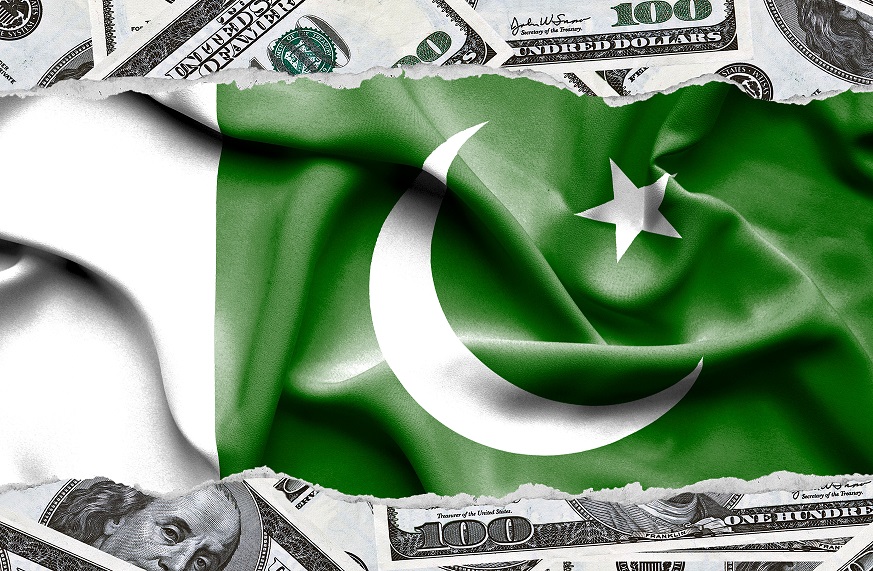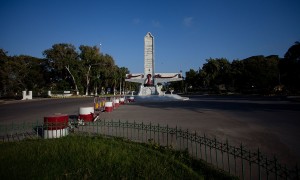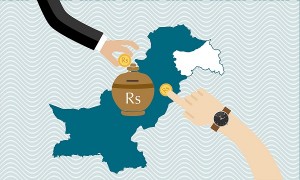State-owned Enterprises
How to reform this crucial asset
Dr Omer Javed
Ownership is an important aspect of management of SOEs (state-owned enterprises or public sector companies (PSCs) in the case of Pakistan). In the context of SOEs, state is the ultimate owner, and its ownership policy should clearly identify first of all the rationale behind such ownership.
According to OECD (Organisation for Economic Cooperation and Development) in its report (2018) ‘Ownership and governance of state-owned enterprises: a compendium of national practices’, such rationale or objectives behind ownership in countries in general range from ‘(1) supporting national economics and strategic interests; (2) ensuring continued national ownership of enterprises; (3) supplying specific public goods or services (after determining the market cannot supply the same goods or services); (4) performing business operations in a “natural” monopoly situation; and (5) creating or maintaining a state-owned monopoly (or oligopoly) where market regulation is deemed infeasible or inefficient’. Based on a sample of 30 countries (Pakistan not included) of various economic levels, the report indicates that the two most prevalent rationales as being points (1) and (3) respectively.
In Pakistan, there are around 170 SOEs (or PSCs) and it is important that government’s committee on reforming SOEs should provide an ownership rationale for each of those SOEs, including in the exercise, reasons as to why the market could- or should not provide the same goods and services in the case of each SOE. This latter exercise will also allow better identify how much, and if at all, a certain SOE should be opened for private participation.
Then is the aspect of ownership entity, which the report (2015) ‘OECD guidelines on corporate governance of state-owned enterprises’ defines as ‘…the part of the state responsible for the ownership function, or the exercise of ownership rights in SOEs… [and] can be understood to mean either a single state ownership agency, a coordinating agency or a government ministry responsible for exercising state ownership’. Hence, depending on a particular way, there are five types of state ownership models identified by OECD in the same report.
The first in the ‘centralized model’ where the first sub-category – the ‘agency or ministry’ sub-model type – is that ownership function is carried out by a single government institution, which may be a specialised ownership agency or a designated government ministry. In Asia, China, Indonesia, and Korea belong to this model. Under this model, among 2000 largest companies globally in 2016, in Asia, China had the highest number of SOEs (companies with at least one-third of state ownership) at 141, Indonesia having 5 companies, and Korea had 3.
At the same time, the ownership entities of the three countries being (1) State-Owned Assets Supervision and Administration Commission (SASAC; China), (2) Ministry of State-Owned Enterprises (Indonesia), and (3) Ministry of Strategy and Finance (Korea). It would be pertinent to mention that SASAC, at the end of 2014, was responsible for 110 non-financial central SOEs, to which were affiliated 38,000 legal entities; hence managing a substantial number of SOEs and affiliated entities.
The second sub-category within the overall centralized model, and to which Pakistan intends to subscribe – details of which will be given in the later part of this article – is the formation of a ‘holding company’ to exercise the ownership function of SOEs on behalf of the state. In Asia, for example, the countries that follow it include (1) Bhutan (Druk Holding and Investment Limited), (2) Kazakhstan (Samruk-Kazyna), and (3) Singapore (Temasek Holding), which as compared to the former two countries, is a lot more successful in managing the SOEs, especially given taking forward the same example of 2000 large companies globally in 2016, Singapore had 6. Still, the holding company model is not that successful overall when compared with the first sub-category of the centralized model.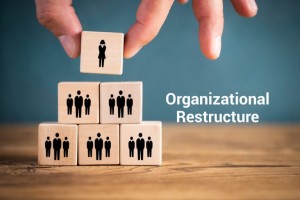
While all the ownership models and corresponding country examples should be studied by the committee in Pakistan responsible for reforming SOEs, SASAC and the underlying law- The Law of the People’s Republic of China on the State-Owned Assets of Enterprises, 2009- which forms its basis, should be focused upon in particular. Such a study should also be made as Pakistan works towards a new ‘State-Owned Enterprise Law’, the draft of which the country intends to produce by end-December 2019, as per the Extended Fund Facility (EFF) programme document. Here, according to EFF document, Pakistan would produce this with the technical assistance of IMF (International Monetary Fund), which begs the question if assistance was also sought from ‘OECD Working Party on State Ownership and Privatisation Practices’ which ‘facilitates policy dialogue and information exchange between OECD Member countries and key partners on improving corporate governance of state-owned enterprises and implementing privatisation policies’. This would indeed be an important source missed, if such technical assistance were not sought before formulation of the final draft.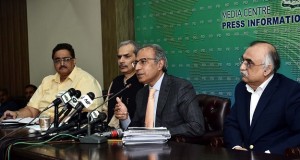
Similarly, the EFF document also indicates that Pakistan intends to establish a ‘holding company’ as part of the SOE reform agenda. As has been and would be indicated that this is one of the ownership models, and other ownership models should also be analyzed given the successful experience as well of countries with them, before deciding on the holding company ownership model. Here, the country would benefit from also focusing – as emphasized earlier – from analysing the centralized model, and in particular the first sub-category to which China belongs, and the success with which it managed its SOEs-led phenomenal growth performance over the years. At the same time, as a futuristic study for planning purpose with regard to managing SOEs, Pakistan should also learn, as why and in what circumstances, China decided to move towards allowing greater private sector participation in SOEs, including the introduction of Mixed-Ownership Enterprises (MOEs) framework.
Here, it may also be indicated that the same EFF document indicates that Pakistan intends ‘jumpstarting the privatisation process’, but no details have been indicated as to whether the country will take the route of the so-called ‘golden age of privatisation’ from the time of end of 1980s to middle of 2000s, where mainly shares of SOEs were offered to investors with weak ownership of state retained under the overall assault of Neoliberal thought-process, but the same route, which in countries with weak economic institutions or regulation gave both a mixed bag of success/failure results, and also formed an important basis of the Global Financial Crisis [GFC] of 2007/08. Or instead, post-GFC 2007/08 route (or second era) of privatisation would be pursued where state retained significant control while listing big SOEs on stock-exchanges or by selling shares to strategic investors. There are important details to fill in subsequent EFF programme documents as follow-up over the privatisation process with regard to this.
Moreover, the same statement on privatisation (under the overall ‘structural policies’ section) from the EFF document (indicated above) needs to internalize the resurge in importance of SOEs globally post-GFC 2007/08, in turn- rethinking any unjustified euphoria towards the privatisation process, and only doing it where essential- as indicated by OECD’s report (2019) ‘A policymaker’s guide to privatisation’, ‘These partially state-owned enterprises benefited from performance and efficiency improvements through the discipline of stock market listing or private ownership. On the other hand, mixed ownership allowed the state to maintain strategic participation in companies for which there remained a rationale for continued state ownership.’
Going back to the discussion of ownership models, the second type in this regard is the ‘dual model’ where ‘two government institutions- in practice often one line ministry per SOE plus the ministry of finance- share in exercising the state ownership function’. The third model is the ‘twin track’, which is ‘functionally equivalent to the centralised model, but with two different government institutions each overseeing a separate portfolio of SOEs. The model differs from the dual model in that for each SOE only one government body exercises ownership’. Many countries follow either of the two models in managing SOEs, and include Belgium, Brazil, Czech Republic, Germany, Switzerland, Estonia, Italy, Turkey, and New Zealand, among others.
Currently, Pakistan follows the fourth model of ownership, and that is the ‘decentralised’ model, where ‘no one single institution or state actor exercises the ownership function. Usually individual ministries responsible for sectoral regularity functions exercise the ownership of SOEs in that same sector. Line ministries are perceived to be de facto running SOEs as an extension of their ministerial powers’. Other countries in Asia that follow this model include Vietnam and Myanmar. In Pakistan, given the lack of capacity of line ministries and any centralized oversight has meant that this model has not produced desired efficiency results for either SOEs or the overall economy. That is one of the main reasons why only one Pakistani SOE made it to the top 2000 largest companies globally in 2016.
On the contrary, the fifth model of ownership, the ‘coordinating agency’ model is an improvement over the decentralised model given extensive oversight aspect here for SOEs. In this model, ‘a specialized government unit acts in an advisory capacity to shareholding ministries on technical and operational issues, with SOEs performance monitoring frequently being its most important mandate.’ Having said, there is considerable overlapping with the decentralized model, yet for the reason indicated above there is indeed greater advantage that could be gained from the latter model. In Asia, countries that follow this model include India and the Philippines, where following the earlier example, 34 SOEs of India were in the top 2000 largest companies globally; although the Philippines had no company featuring in that list.
 Jahangir's World Times First Comprehensive Magazine for students/teachers of competitive exams and general readers as well.
Jahangir's World Times First Comprehensive Magazine for students/teachers of competitive exams and general readers as well.
